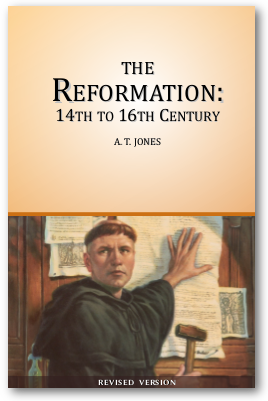 Adventists see their movement as a continuation of the Reformation. The aim of the Reformation was to recover the truth and experience of the early Apostolic church, present that gospel to the whole world, and thus prepare the way for Christ’s return. The idea of the church’s role in preparing the way for Christ is well expressed in the following verse:
Adventists see their movement as a continuation of the Reformation. The aim of the Reformation was to recover the truth and experience of the early Apostolic church, present that gospel to the whole world, and thus prepare the way for Christ’s return. The idea of the church’s role in preparing the way for Christ is well expressed in the following verse:
Revelation 19
7 Let us be glad and rejoice, and give honor to him: for the marriage of the Lamb is come, and his wife has made herself ready.
8 And to her was granted that she should be arrayed in fine linen, clean and white: for the fine linen is the righteousness of saints.
This important work by A. T. Jones takes a deeper look at the very core principles of the Reformation, which were (and still are) in danger of being lost by the generations following who did not have to struggle to obtain their freedom.
As well, Adventists, who claim to be a continuation of the Reformation, need to examine themselves to see if they are indeed building on the same foundation today.
This was the last book Jones wrote, published in 1913, when he was 63 years old. He passed away 10 years later. In many ways this book is a culmination of much of his religious thought, his “swan song” as it were, the harvest of years of studying, preaching, and writing on history, prophecy, and Christian faith.
However, Jones was also separated from the Seventh-day Adventist denomination about 5 years prior to the publication of this book, and there were some bitter circumstances surrounding this, which affected his views after that time. I have explained this in more detail in the “Foreword” of this edition.
Consequently, this is a “Revised Version” of the book. There are two reasons for this: First, to remove the material concerning the Federation of Churches, a local movement in Jones’ day that does not exist today. Second, to remove sections of two chapters which over-emphasized “individuality” and “non-denominational” ideas. Again, the details of these omissions are explained in the “Foreword”. The principles are important, and I wanted them to stand free and unencumbered by the personal or national issues of that particular time. 319p
Contents
- What is Protestant?
- What Protestant Means in America
- What Caused the Reformation?
- The Reformation and the Roman Church
- The Reformation Church
- The Reformation Head of the Church
- The Reformation Building of the Church
- The Reformation Guidance of the Church
- The Reformation Christian Unity
- The Reformation and the Bible
- The Reformation and the Gospel
- The Reformation Christian Brotherliness
- The Reformation Religious Liberty
- The Reformation and the Papacy
- The Reformation Fully Accomplished
- The Reformation and Sunday
- The Reformation and the Sabbath
- That Woman Jezebel
- The Two Women of Revelation


